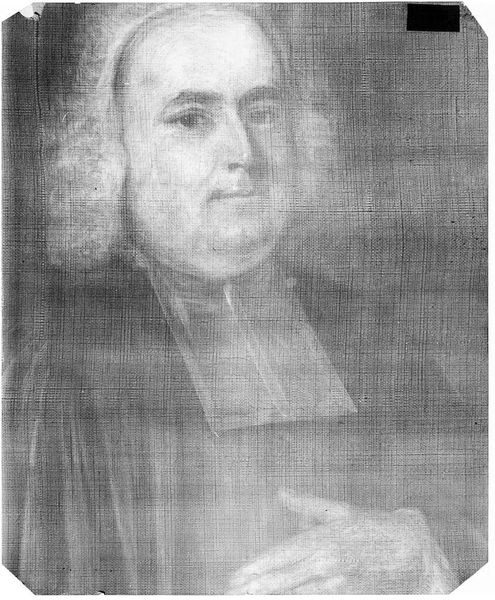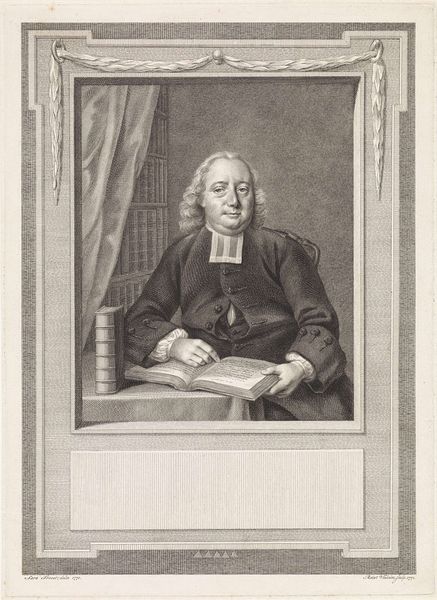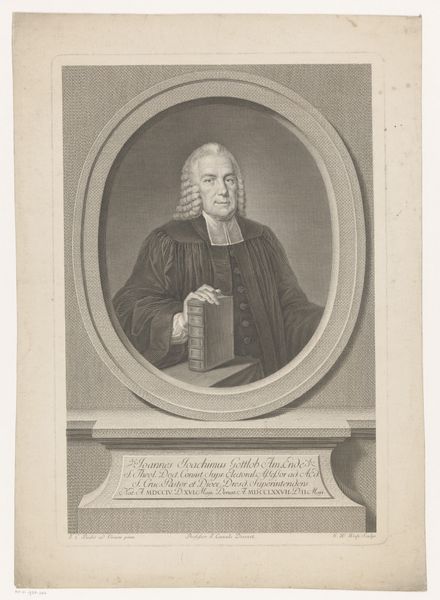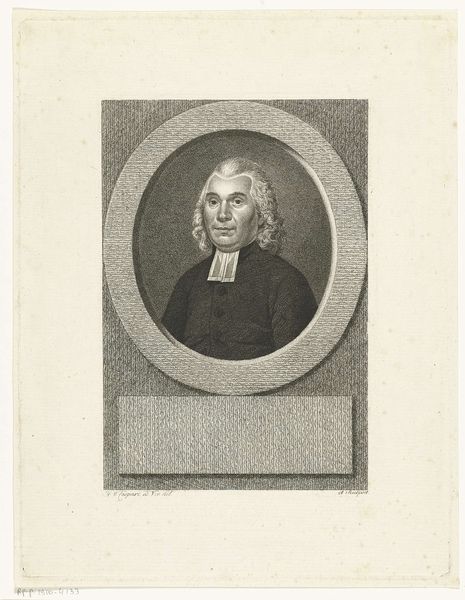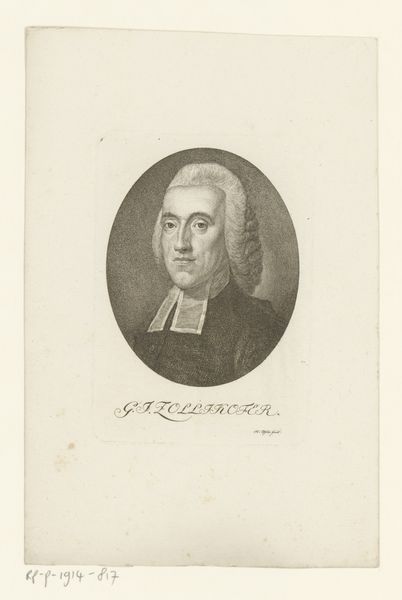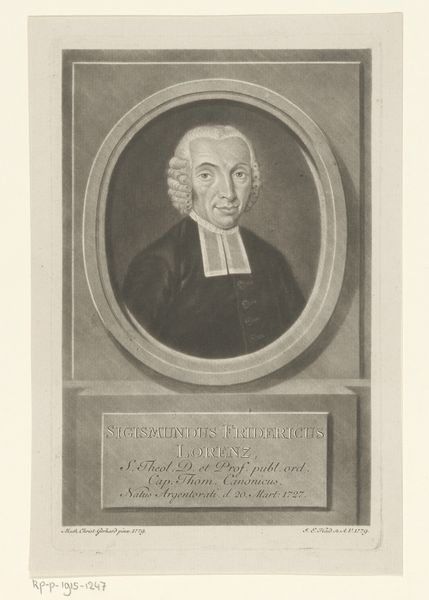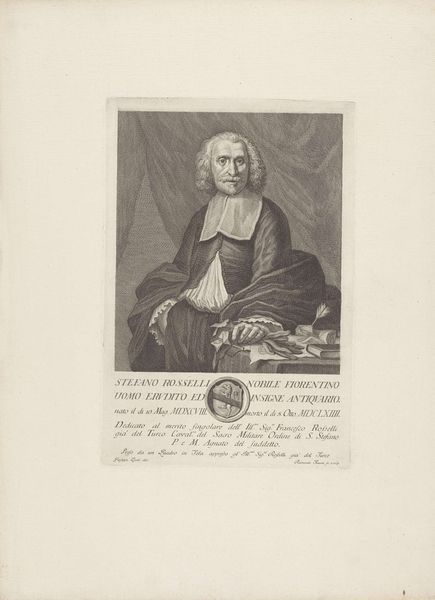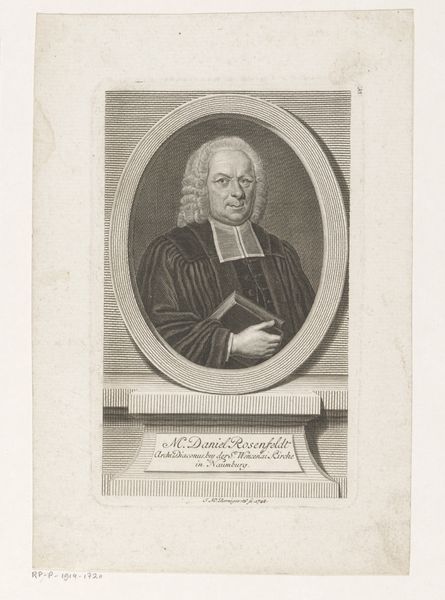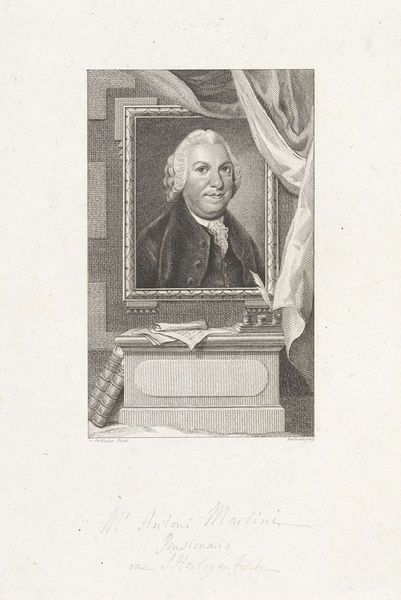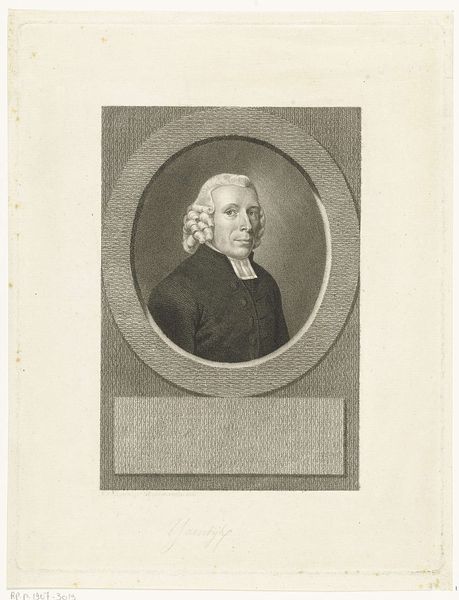
Jonathan Mayhew, D. D. Pastor of the West Church in Boston, New England 1766
0:00
0:00
drawing, print, etching, pencil, graphite, engraving
#
portrait
#
drawing
#
neoclacissism
# print
#
etching
#
black and white
#
pencil
#
graphite
#
engraving
Dimensions: irregularly trimmed to plate line: 14 1/4 x 10 1/4 in. (36.2 x 26 cm)
Copyright: Public Domain
Curator: Standing before us is an engraving from 1766 titled, "Jonathan Mayhew, D. D. Pastor of the West Church in Boston, New England," crafted by Richard Jennys, Jr. It's a compelling portrait, presently residing at The Metropolitan Museum of Art. Editor: It has a very somber tone, doesn't it? The black and white etching conveys a sense of austerity, almost severity. He looks… well, imposing. Curator: Indeed. The symbolism here is multilayered. The oval frame immediately harkens back to classical antiquity, and the stark monochrome palette elevates the serious nature of the subject depicted. It invites contemplation on leadership and authority in Colonial America. Editor: But how can we separate his "leadership" from the complicated politics of the era? Mayhew was a firebrand, deeply involved in pre-Revolutionary politics. This isn't just a portrait of a pastor; it's the carefully constructed image of a political figure. The gown, the clerical collar, all amplify his presence and authority in a society grappling with its own identity. Curator: Precisely, and look closely at the placement of his gaze – direct, unwavering. It's meant to project steadfastness, faith. And while his clothing aligns with his station, there’s an undeniable elegance to the cascading drape of his robe, hinting at a level of intellectual and spiritual grace. Editor: I see something quite deliberate in the rendering, or perhaps, in this case, lack of it. His face appears almost mask-like. It raises questions about who Jonathan Mayhew was versus the image he wished to project – especially during a time of political upheaval. The lack of visible emotion feels…calculated. Curator: That’s a valid point. The artist wasn't merely capturing a likeness. Jennys, Jr. was actively constructing an ideal of piety and strength, which reflected the cultural aspirations of the era. Consider that the clarity and sharp lines, all emblems of Neoclassical principles. Editor: In a way, this portrait reflects the ambiguities inherent in early American identity: straddling religious piety and budding revolutionary spirit. It is the visual equivalent of walking a tightrope. Curator: This journey has offered a renewed appreciation for the symbols embedded in even the most seemingly straightforward portraits. Editor: Absolutely, and revealed how portraits like this can actively shape, and often manipulate, public perception during pivotal moments in history.
Comments
No comments
Be the first to comment and join the conversation on the ultimate creative platform.
